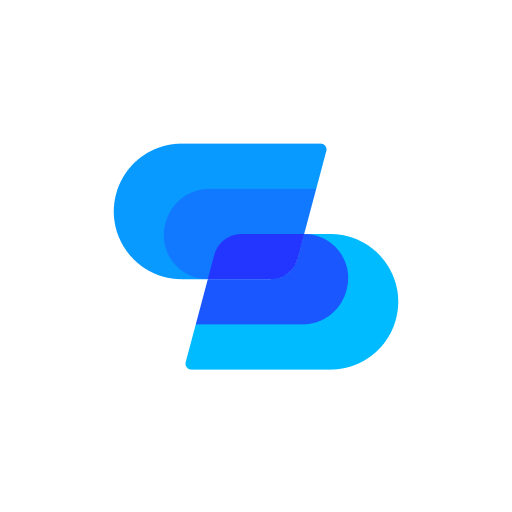You’ve built a SaaS product, but are users truly engaging with it? The key to success lies in a stellar UI/UX that not only looks good but feels intuitive. It’s not just about aesthetics; it’s about creating an experience that seamlessly guides users through your product’s features. By focusing on user needs, simplifying navigation, and optimizing performance, you can transform your SaaS from functional to exceptional. But how do you strike the perfect balance between form and function? What strategies can you employ to guarantee your product stands out in a crowded market? The answers might surprise you.
Understand Your Users’ Needs
Three key steps to understanding your users’ needs: observe, listen, and analyze their behavior within your SaaS product.
Start by watching how users interact with your interface. What features do they gravitate towards? Where do they struggle? Use heatmaps and session recordings to gain valuable insights.
Next, listen to your users. Conduct surveys, interviews, and focus groups to gather direct feedback. Don’t just ask what they like or dislike; dig deeper into their goals, pain points, and expectations. What problems are they trying to solve with your product?
Finally, analyze user data. Examine metrics like user retention, feature adoption, and task completion rates. Look for patterns and anomalies that reveal how users engage with your SaaS offering.
Simplify Navigation and Information Architecture
A cluttered, confusing interface is the fastest way to frustrate your users and tank your SaaS product’s success. To prevent this, focus on simplifying your navigation and refining your information architecture. Start by auditing your current structure and identifying unnecessary complexities. Streamline your menu items, reducing them to the essential categories that align with your users’ primary goals.
Implement a logical hierarchy that guides users intuitively through your product. Use clear, descriptive labels for buttons and menu items, avoiding jargon or ambiguous terms. Consider incorporating a search function to help users quickly find specific features or content. Organize related functions into easily accessible groups, and use progressive disclosure to reveal more complex options only when needed.
Don’t forget about mobile users – confirm your navigation is responsive and touch-friendly. Implement breadcrumbs or a sitemap to help users understand their location within your product.
Regularly test your navigation with real users, gathering feedback and iterating accordingly. Remember, the goal is to create a seamless, effortless experience that allows users to focus on their tasks rather than struggling with your interface.
Optimize for Mobile Devices
In today’s mobile-first world, neglecting to optimize your SaaS product for smartphones and tablets is a surefire way to lose a significant portion of your user base. Your users expect seamless experiences across all devices, so it’s essential to prioritize mobile optimization.
Start by embracing responsive design principles. Make sure your interface adapts fluidly to various screen sizes and orientations. Simplify your layouts for smaller screens, focusing on essential features and content. Implement touch-friendly elements like larger buttons and swipe gestures to enhance usability.
Consider developing a dedicated mobile app for your SaaS product. This can offer a more tailored experience and leverage device-specific features. However, don’t neglect your mobile web version, as many users prefer browser access.
Optimize your product’s performance for mobile networks. Reduce load times by compressing images, minifying code, and implementing lazy loading. Streamline data usage to accommodate users with limited data plans.
Implement Consistent Design Language
To elevate your SaaS product’s UI/UX, you’ll need to establish and rigorously implement a consistent design language across all aspects of your interface. This visual and functional cohesion isn’t just about aesthetics; it’s essential for user comprehension and efficiency.
Start by defining your core design elements: color palette, typography, iconography, and spacing. These fundamentals should reflect your brand identity and cater to your target audience.
Next, create an extensive style guide that documents these elements and their usage rules. This guide becomes your team’s bible, ensuring uniformity across all product areas.
Don’t stop at visual consistency. Extend your design language to interaction patterns, micro-animations, and even tone of voice in UI copy.
Users should feel a seamless continuity as they navigate through different features and sections of your SaaS product.
Enhance Loading Speed and Performance
You can’t afford to ignore your SaaS product’s loading speed and performance—they’re essential for user satisfaction and retention.
Start by optimizing your code efficiency, eliminating bloat, and streamlining processes to reduce load times.
Implement progressive loading techniques and leverage browser caching to create a smoother, more responsive user experience that keeps customers engaged and coming back for more.
Optimize Code Efficiency
Optimization wizards know that efficient code is the backbone of a lightning-fast SaaS product. It’s not just about writing fewer lines; it’s about crafting code that performs tasks with minimal resource consumption.
Start by identifying bottlenecks through profiling tools. These will pinpoint where your code spends most of its time, allowing you to focus your optimization efforts.
Embrace lazy loading techniques to defer the initialization of objects until they’re needed. This can dramatically reduce initial load times. Implement caching strategies to store frequently accessed data, reducing redundant computations and database queries.
Don’t shy away from refactoring; simplify complex algorithms and eliminate redundant code.
Consider the impact of third-party libraries. While they can save development time, they may introduce unnecessary bloat. Evaluate each dependency critically and opt for lighter alternatives when possible.
Leverage modern browser capabilities like WebAssembly for computationally intensive tasks.
Implement Progressive Loading
Turbocharge your SaaS product’s perceived speed with progressive loading, a game-changing approach that prioritizes essential content delivery. By implementing this technique, you’ll dramatically improve your users’ initial experience, reducing frustration and boosting engagement.
Start by identifying your application’s critical components. Load these first, allowing users to interact with core functionality while less important elements load in the background. This creates an illusion of instant responsiveness, even on slower connections.
Leverage lazy loading for images and heavy content. Only load what’s visible on the screen, deferring off-screen elements until they’re needed. This approach conserves bandwidth and accelerates initial page rendering.
Implement skeleton screens to provide immediate visual feedback. These placeholder layouts give users a sense of progress and structure while content loads, reducing perceived wait times.
Consider using service workers to cache frequently accessed data and assets. This enables offline functionality and lightning-fast subsequent loads, enhancing your app’s overall performance.
Don’t forget to optimize your API calls. Implement pagination, use GraphQL for granular data fetching, or consider server-side rendering for complex applications. These strategies guarantee your backend supports your frontend’s progressive loading efforts, creating a seamless, fast-loading experience that keeps users engaged and coming back for more.
Leverage Browser Caching
Harness the power of browser caching to slash load times and supercharge your SaaS product’s performance. By leveraging this technique, you’ll guarantee that static assets like images, CSS, and JavaScript files are stored locally in users’ browsers, eliminating the need for repeated downloads.
To implement effective caching, set appropriate cache-control headers for your resources. Specify max-age directives for files that don’t change frequently, allowing browsers to serve cached versions without contacting your server.
For dynamic content, use ETags or Last-Modified headers to enable conditional requests, reducing unnecessary data transfers.
Don’t overlook the importance of cache busting. When you update assets, append version numbers or hashes to filenames to force browsers to fetch the latest versions. This approach guarantees users always have the most up-to-date resources while still benefiting from caching.
Consider implementing a service worker to take caching to the next level. This powerful tool allows you to cache entire pages and API responses, enabling offline functionality and lightning-fast subsequent loads.
Incorporate User Feedback Loops
A robust feedback loop is your secret weapon for continuously refining your SaaS product’s UI/UX. It’s not enough to launch and forget; you must actively engage with your users to understand their pain points and preferences.
Start by implementing in-app surveys and feedback forms strategically placed throughout your product. Don’t bombard users, but do catch them at key moments, like after completing a task or encountering an error. Use tools like Hotjar or FullStory to capture user interactions and identify areas of friction.
Don’t just collect data; act on it. Prioritize feedback based on frequency and impact, then create a roadmap for improvements. Consider A/B testing different UI elements to validate changes before full implementation.
Engage power users in beta testing new features. Their insights are invaluable and can help you catch issues before wider release.
Also, don’t underestimate the power of user interviews. Schedule regular sessions to dive deeper into user experiences and uncover nuanced issues that quantitative data might miss.
Leverage Data Analytics for Insights
While user feedback provides qualitative insights, data analytics offers a powerful lens to quantify user behavior and pinpoint UI/UX improvements with precision.
By leveraging data, you’ll uncover patterns and trends that users themselves mightn’t even be aware of. Start by implementing robust tracking tools to monitor key metrics like user flow, time-on-page, and drop-off rates.
Don’t just collect data; analyze it rigorously. Look for bottlenecks in your user journey, identify features that aren’t being utilized, and spot where users are getting stuck.
Heat maps can reveal which elements of your interface are attracting attention and which are being ignored. A/B testing allows you to experiment with different designs and make data-driven decisions.
Conduct Regular Usability Testing
Regular usability testing is your secret weapon for uncovering hidden UI/UX flaws and validating design decisions. It’s not a one-time event but an ongoing process that should be woven into your product development cycle.
By observing real users interacting with your SaaS product, you’ll gain invaluable insights that data analytics alone can’t provide.
Don’t wait for the perfect prototype. Start testing early and often, even with low-fidelity mockups. Recruit a diverse group of participants that represent your target audience. As they navigate through tasks, pay attention to their reactions, hesitations, and frustrations. These subtle cues often reveal pain points you’ve overlooked.
Use a mix of quantitative and qualitative methods. Time-on-task metrics and success rates offer objective data, while think-aloud protocols and post-test interviews provide context and depth.
Don’t just focus on usability; assess the overall user experience, including satisfaction and emotional response.
To Wrap Up
You’ve got the tools to revolutionize your SaaS product’s UI/UX. Don’t wait.
Start by truly understanding your users, then simplify and optimize relentlessly.
Consistency is key, so establish a strong design language.
Speed matters – make it snappy.
Keep the feedback loop flowing and let data guide your decisions.
Remember, it’s an ongoing process. Regularly test and refine.
Your users will thank you, and your product will thrive. Now go make it happen.

